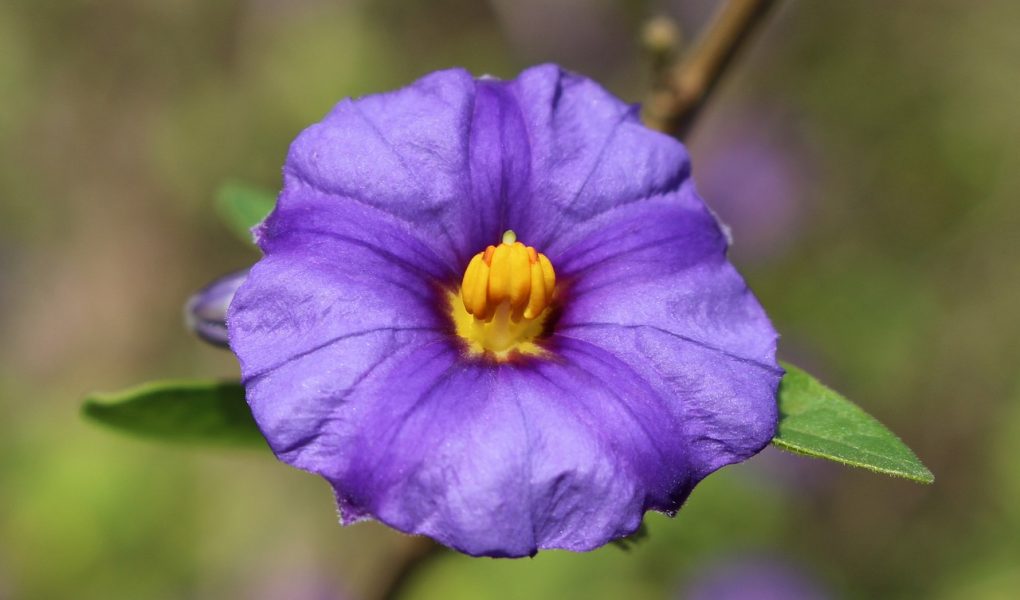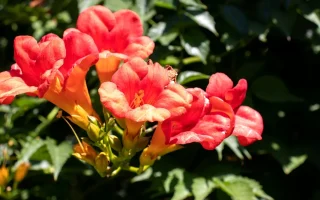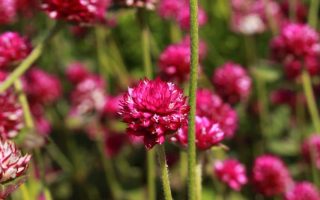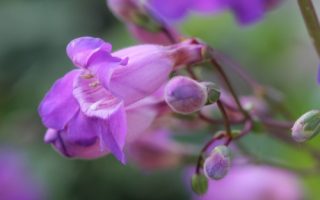kimzolciakwedding.com – The Paraguay Nightshade (Solanum lycocarpum), also known as the “Cuyana” or “Mato Grosso,” is an intriguing flowering plant native to South America. Recognized for its striking blooms and the rich history it holds in its native regions, the Paraguay Nightshade is an evergreen shrub that draws attention with its bold flowers and glossy foliage. While this plant is often found growing in the wild, it also has a place in ornamental gardens where it can be admired for its beauty and unique characteristics.
What is the Paraguay Nightshade?
The Paraguay Nightshade is a member of the Solanaceae family, which includes a diverse range of plants like tomatoes, eggplants, and the well-known potato. Native to the subtropical and tropical regions of South America, particularly in Paraguay and parts of Brazil and Argentina, this flowering shrub is known for its bright purple or violet flowers and distinctive, dark green foliage.
This shrub typically grows between 3 and 6 feet in height, with a bushy and compact appearance. The Paraguay Nightshade produces clusters of trumpet-shaped flowers that are predominantly purple, with a striking yellow center. The flowers contrast beautifully with the dark, glossy leaves, adding an elegant touch to any landscape. While it is primarily cultivated for its ornamental beauty, the plant also produces small berries that are toxic when consumed by humans or animals, a characteristic common to many plants in the Solanum genus.
Characteristics of Paraguay Nightshade Flowers
The flowers of the Paraguay Nightshade are the standout feature of this plant. Each flower is about 1 to 1.5 inches in diameter and is characterized by its distinct funnel shape. The petals are typically a rich shade of purple or violet, with a golden-yellow center that contrasts beautifully against the dark, glossy green leaves. The vibrant coloration of the flowers attracts various pollinators, such as bees and butterflies, making the plant a valuable addition to pollinator-friendly gardens.
The flowers grow in clusters, creating a striking visual display on the shrub. The blooms are generally short-lived, but new flowers appear continuously during the blooming season, ensuring that the plant remains vibrant and colorful for much of the year. The Paraguay Nightshade’s flowers are not only beautiful but also fragrant, releasing a sweet and mild scent that adds to its allure.
After flowering, the plant produces small, round berries that turn green before ripening to a yellow or orange color. These berries contain toxic compounds, making them unsafe for consumption, though they do attract birds and other wildlife.
Growing the Paraguay Nightshade
The Paraguay Nightshade is a relatively easy-to-grow plant, provided that it is given the right growing conditions. It is typically grown in subtropical and tropical regions but can also be cultivated in temperate climates as a container plant, where it can be brought indoors during colder months. Here are some key tips for growing the Paraguay Nightshade:
- Planting: This plant can be propagated by seeds or cuttings. If growing from seed, start indoors in a warm environment, as the seeds need warmth to germinate. Once the seedlings are large enough, they can be transplanted outdoors in well-draining soil. If propagating by cutting, simply take a stem cutting and place it in a pot with moist, well-draining soil.
- Location: The Paraguay Nightshade prefers full sun to partial shade. While it can tolerate some shade, it performs best with at least 6 hours of direct sunlight per day. In regions with harsh summer sun, some afternoon shade may help prevent leaf scorch.
- Soil: This shrub prefers well-draining, fertile soil. It can tolerate a variety of soil types, including sandy and loamy soils, but it thrives in slightly acidic to neutral soil with good drainage. If growing in containers, use a high-quality potting mix that offers good drainage.
- Watering: The Paraguay Nightshade needs consistent moisture, particularly during the growing season. However, it is important not to overwater the plant, as this can lead to root rot. Water deeply and allow the top few inches of soil to dry out between waterings. Once established, the plant is somewhat drought-tolerant but will benefit from regular watering during dry periods.
- Fertilizing: The Paraguay Nightshade is not particularly demanding when it comes to fertilization, but it will benefit from a balanced fertilizer applied in early spring. This will encourage healthy growth and abundant blooms. Avoid heavy fertilization, as this can result in excessive foliage growth at the expense of flowers.
Care and Maintenance
Although the Paraguay Nightshade is a hardy plant, some basic care and maintenance can help it thrive:
- Pruning: Pruning is typically done in late winter or early spring before new growth begins. Remove any dead or damaged branches and shape the plant to maintain a neat appearance. If the shrub becomes too leggy or overgrown, pruning can help encourage more compact growth and promote better flowering.
- Mulching: Apply a layer of organic mulch around the base of the plant to help retain moisture and regulate soil temperature. Mulch can also suppress weeds and improve soil structure as it decomposes. Be sure to keep the mulch away from the plant’s stems to avoid potential rot.
- Pests and Diseases: The Paraguay Nightshade is relatively pest-resistant, but it can occasionally attract aphids, whiteflies, or spider mites. Regularly inspect the plant for signs of pests, and treat them with insecticidal soap or neem oil if necessary. Fungal diseases are uncommon but may occur in overly wet conditions, so it is important to ensure good air circulation around the plant.
Symbolism and Cultural Significance
The Paraguay Nightshade is not just an ornamental plant but also holds cultural significance in some South American regions. Due to its vibrant flowers and ornamental value, it has become a popular choice for gardens and landscapes, where it is often associated with beauty, vitality, and strength. The plant’s ability to thrive in harsh conditions and bloom prolifically is sometimes seen as a symbol of resilience and perseverance.
However, it is important to note that, like many members of the Solanum genus, the Paraguay Nightshade contains toxic compounds, including solanine. These compounds can be harmful if ingested, making the plant potentially dangerous to humans and animals. While the plant’s beauty is admired, caution should be exercised to prevent accidental consumption of its berries.
Conclusion
The Paraguay Nightshade is a stunning flowering shrub that adds color, fragrance, and visual interest to any garden or landscape. With its vibrant purple blooms, glossy foliage, and sweet scent, this plant is an excellent choice for gardeners looking to create a striking display of flowers. While the plant is relatively easy to care for, it is important to provide it with the right growing conditions, including full sun and well-draining soil.
Whether used in a mixed border, as a specimen plant, or as part of a pollinator-friendly garden, the Paraguay Nightshade offers both beauty and utility. Just remember that its berries are toxic, so it should be planted with caution in areas where children or pets may have access.
With its alluring flowers and unique characteristics, the Paraguay Nightshade is sure to become a standout in any garden, offering both ornamental value and ecological benefits.



